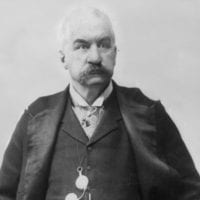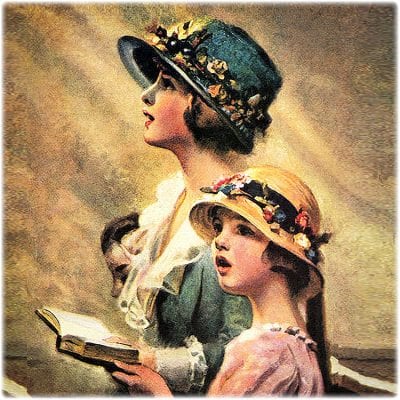The mother of all insider trades was pulled off in 1815, when London financier Nathan Rothschild led British investors to believe that the Duke of Wellington had lost to Napoleon at the Battle of Waterloo. In a matter of hours, British government bond prices plummeted. Rothschild, who had advance information, then swiftly bought up the entire market in government bonds, acquiring a dominant holding in England’s debt for pennies on the pound. Over the course of the nineteenth century, N. M. Rothschild would become the biggest bank in the world, and the five brothers would come to control most of the foreign-loan business of Europe. “Let me issue and control a nation’s money,” Rothschild boasted in 1838, “and I care not who writes its laws.”

In the United States a century later, John Pierpont Morgan, though many publications make him out to be the hero of the crisis, again used rumor and innuendo to create a panic that would change the course of history. The panic of 1907 was triggered by rumors that two major banks were about to become insolvent. Later evidence pointed to the House of Morgan as the source of the rumors.
The public, believing the rumors, proceeded to make them come true by staging a run on the banks. Morgan then nobly stepped in to avert the panic by importing $100 million in gold from his European sources. The public thus became convinced that the country needed a central banking system to stop future panics, overcoming strong congressional opposition to any bill allowing the nation’s money to be issued by a private central bank controlled by Wall Street; and the Federal Reserve Act was passed in 1913. Morgan created the conditions for the Act’s passage, but it was Paul Warburg who pulled it off. An immigrant from Germany, Warburg was a partner of Kuhn, Loeb, the Rothschilds’ main American banking operation since the Civil War. Elisha Garrison, an agent of Brown Brothers bankers, wrote in his 1931 book Roosevelt, Wilson and the Federal Reserve Law that “Paul Warburg is the man who got the Federal Reserve Act together after the Aldrich Plan aroused such nationwide resentment and opposition. The mastermind of both plans was Baron Alfred Rothschild of London.” Morgan, too, is now widely believed to have been Rothschild’s agent in the United States. 1
Robert Owens, a co-author of the Federal Reserve Act, later testified before Congress that the banking industry had conspired to create a series of financial panics in order to rouse the people to demand “reforms” that served the interests of the financiers.
Early in 1907, banker Jacob Schiff of Kuhn, Loeb & Co. pitched in a speech to the New York Chamber of Commerce that “unless we have a central bank with adequate control of credit resources, this country is going to undergo the most severe and far reaching money panic in its history”. (Herrick 1908)
Excerpts from William Engdahl’s book ‘American Oligarchy: God’s of Money‘ shed more light on the situation:
(pg. 34) … By 1907, the Morgan and Rockefeller financial groups were ready to launch their next financial attack on the country’s economy – what came to be called the Panic of 1907. This was to be the needed final push to their greatest coup of all – passage in 1913 of the Federal Reserve Act in which a largely unwitting US Congress turned control of its power to print money over to a consortium of private bankers.
(pg. 36) Passage in 1913 of the Federal Reserve Act – a largely unwitting US Congress turned control of its power to print money over to a consortium of private bankers.
(pg. 37) The [1907] panic had been carefully fed by false rumors deliberately planted by [J.P.] Morgan cronies in newspapers they controlled, including The New York Evening Sun and The New York Times.
… [Theodore] Roosevelt, who had campaigned on the nickname “trust-buster,” was deeply entrenched with the Money Trust, especially to the Morgan interests. In October 1903 Roosevelt had invited J.P. Morgan to the White House for a private discussion, and secretly corresponded with railroad mogul E. H. Harriman over political appointments and campaign contributions.
(pg. 38) The gullible [American] public was told of a “heroic and courageous rescue of the nations’ banking system by the selfless J. Pierpont Morgan [Panic of 1907]. One of the few men who was not convinced of the altruistic motives of Morgan, Rockefeller and their Wall Street cronies was the pro-silver Democrat William Jennings Bryan. Bryan declared, “Blame the unscrupulous financiers who have piled up predatory wealth and who exploit a whole nation as high finance.”
(pg. 39) [J.P.] Morgan, [John D.] Rockefeller and the elite interests behind the Money Trust … were determined to use the panic [of 1907] and the crisis atmosphere to move forward their most audacious plan yet – capturing from the Federal Government of the United States its power to coin print and control the supply of money. Their plan was to create a national bank [Federal Reserve] in the private hands of bankers J.P. Morgan, Rockefeller and friends.
(pg. 40) Wisconsin Senator Robert La Follette in 1908: “A group of financiers who withhold and dispense prosperity, deliberately brought on the Panic” [of 1907]
(pg. 41) In 1908, a year after the creation of [Senator Nelson] Aldrich’s National Monetary Commission the most powerful bankers in America met in highest secrecy to draw up plans for the greatest financial and political coup d’etat in the history of the United States. The plan was to rob from the US Congress its constitutionally mandated powers to create and control money. The coup was to usurp those Constitutional powers in order to serve private special interests, even at the expense of the general welfare of the population of the United States.
Frederick Augustus Heinze Sr. was a Montana copper millionaire who was selected as the key target for the money trust’s 1907 panic.
“Heinze brought his copper fortune to New York and joined with C. W. Morse of the Ice Trust. Jointly they acquired control of Mercantile National Bank, using the assets of the Bank of North America already dominated by Morse. Heinze and Morse then acquired control of the Knickerbocker Trust Company, allied with the Trust Company of America and Lincoln Trust. They then incorporated a speculative vehicle, the United Copper Company. It was stock market games with United Copper that precipitated the 1907 crisis. Banks under control of the “money trust” called their loans to United Copper and began a run on the Heinze-Morse Mercantile National Bank. It is now generally agreed “that the 1907 panic was precipitated by the struggle to get rid of Heinze.”” – Anthony Sutton, The Federal Reserve Conspiracy, p. 64
Sources:



